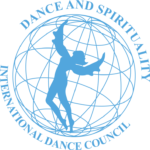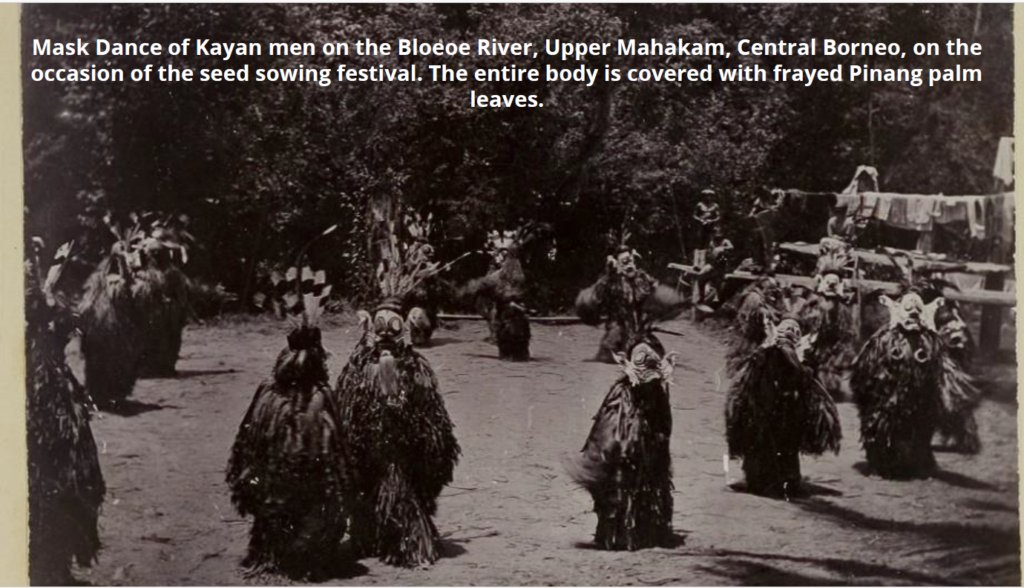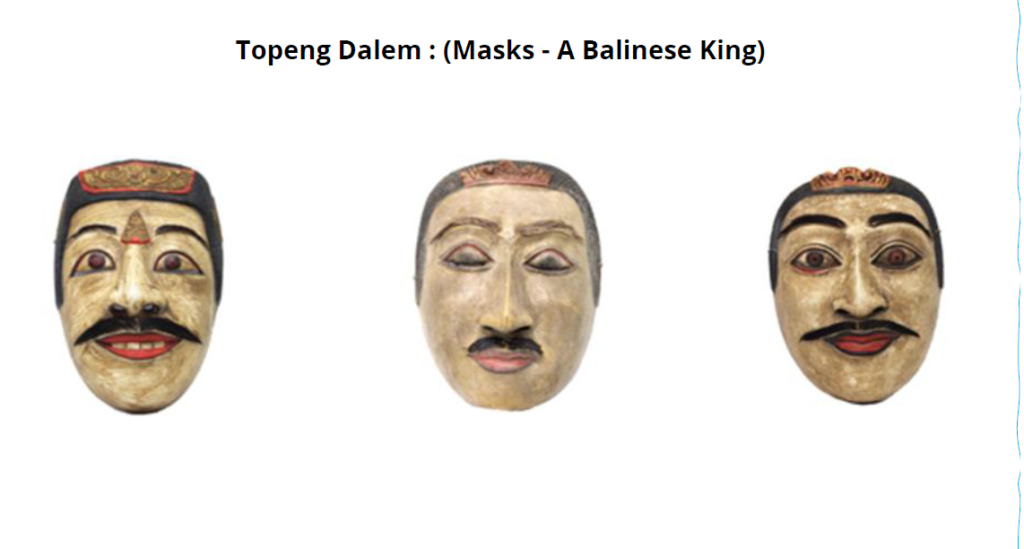Indonesia
Dance in Indonesia reflects the country’s diversity of ethnicities and cultures. There are more than 1,300 ethnic groups in Indonesia. Austronesian roots and Melanesian tribal forms are visible, and influences ranging from neighboring Asian and even western styles through colonization. Each ethnic group has its own dances: there are more than 3,000 original dance forms in Indonesia. The old traditions of dance and drama are being preserved in the many dance schools which flourish not only in the courts but also in the modern, government-run or supervised art academies
For classification purposes, the dances of Indonesia can be divided according to several aspects. In the historical aspect it can be divided into three eras; the prehistoric-tribal era, the Hindu-Buddhist era, and the era of Islam. According to its patrons, it can be divided into two genres; court dance and folk dance. In its tradition, Indonesian dances can be divided into two types; traditional dance and contemporary dance
Traditional Indonesian dances are distinct from each other and reflect the unique philosophies of the ethnic groups
Kakawin Ramayana was further developed on the neighboring island of Bali
becoming the Balinese Ramakavaca The bas reliefs of Ramayana and
Krishnayana scenes are carved on balustrades of the 9 th century Prambanan temple in Yogyakarta. As well as in the 14 th century Penataran temple in East Java In Indonesia,the, and has become the source of moral and spiritual guidance as well as aesthetic expression and entertainment, for example in wayang and traditional dances
References
Wikipedia read
Indonesian Kakawin Ramayana by Dr Uma Murthy “Read“
List Of Dances
Jatilan

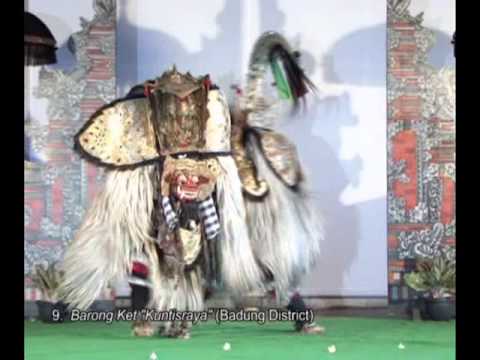
Choreography, possessions and dispossessions are the sequence of the Jatilan ritual-performance in the village of Bener on Java island. The art of Jatilan is the initiation performance defined recently as a folkloristic art form of the Javanese tradition. Ancient transmissions have been handed down from the Majapahit and Mataram kingdoms, thanks to the elderly PAWANG masters to children’s and old people’s preparing themselves for the ability to see beyond the body practicing: dancing, playing traditional instruments and singing old songs in vernacular language. The ethnographic research that follows in this article transcribes the languages and symbolisms expressed by bodies possessed by the invisible. Groups of dancers, ride black and also white horses builted with bamboo and coconut, dancing for the public and collectively offering their self like flowers, rice and incense smoke on the largest and metaphorical table of the village. Space, time and simultaneity moving the young horses under the guidance of the wise Javanese tigers.
AUTHOR : STEFANIA ROSSETTI
INDONESIA
Region:
Java
Ethnic group:
Topeng
Celebrations where masks are worn on the face, used in ritual dances, hung on
walls in houses, placed in burial sites to honor departed ancestors, or even
made into motifs on clothing to link villagers to their ancestors, gods, or
spirits are still used by indigenous tribal groups to aid communication with
them, attract, please, and entertain them and either ask them for blessings
and a reciprocal connection or satisfy or placate malevolent ones so they will
keep their distance, be scared away and not bring disease or negative energy to the village
An example of this is the Dayak Hudoq celebration in Kalimantan where
ancestors, gods, and the many spirits of their world are honored by celebrants where masks (also called Hudoq are used as a welcome and entreaty, and also pleasing amusements are provided to bring favor and protection or to gratify evil forces to keep them at bay .
With the Dyaks festivities are often intimately connected to agriculture, especially planting and harvesting, and are seen as a way to protect crops from pests (also called hudoq prevent floods, famine, and drought as well as provide entertainment not only for gods, spirits, ancestors but also for all living attendees
Dance Mask (TOPENG) of Indonesia and it’s Symbolism
Indonesia
AUTHOR : H.E. Pr Ismunandar
Alternate Permanent Delegate of the Republic of Indonesia for UNESCO
INDONESIA
Region:
Borneo , Java
Ethnic group:
Bedhaya
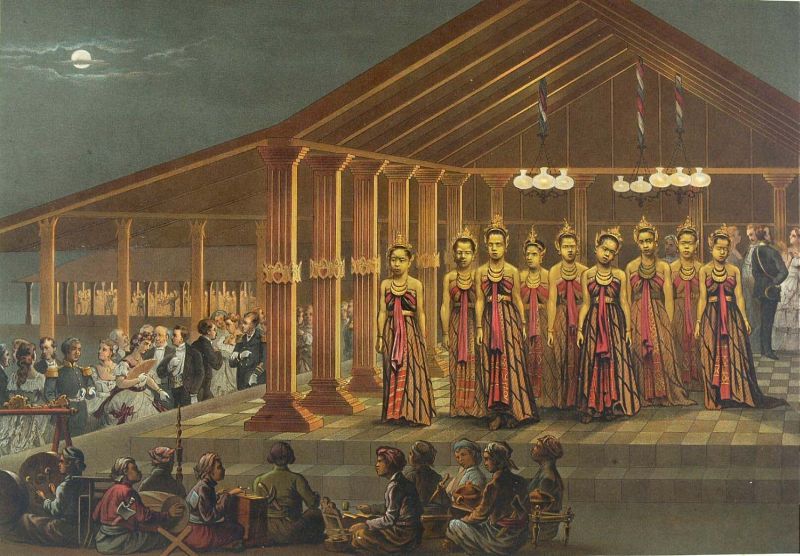
Tropenmuseum, part of the National Museum of World Cultures
Credit : Pura Pakualaman
Bedhaya is a sacred, ritualised Javanese dance, associated with the royal palaces of Yogyakarta and Surakarta. Along with the srimpi, the bedhaya epitomized the elegant character of the royal court and became an important symbol of the ruler’s power.
The bedhaya has different forms in the two court cities, the bedhaya Ketawang in Surakarta (Solo) and the bedhaya Semang in Yogyakarta, the latter of which has not been performed for more than 20 years. The Solonese dance continues to be performed once per year on the second day of the Javanese month of Ruwah (May), to commemorate the ascension of the current Susuhunan (prince) of Surakarta. Nine females, relatives or wives of the Susuhunan, perform the dance before a private audience. An invitation to anyone outside of the inner circle of the court is a considerable honor
INDONESIA
Region:
Central Java
Ethnic group
Spirituality
Caci
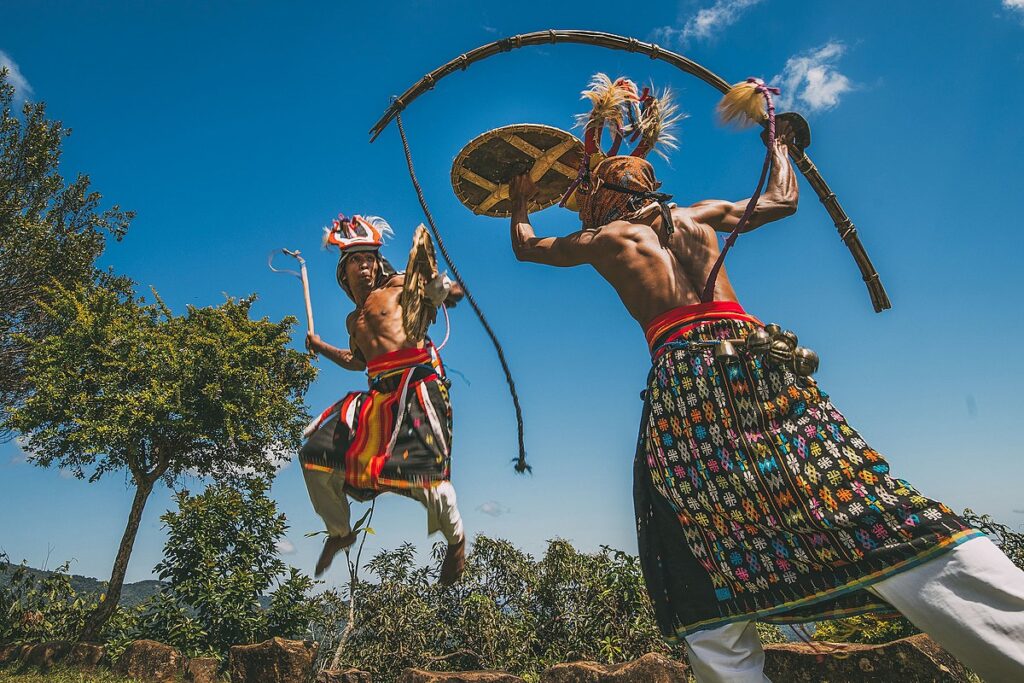
Credit : Hello Mister Net
Caci is a form of fighting with a whip or stick. It appears to be indigenous to Flores in East Nusa Tenggara, but it is also practiced in neighboring islands of Bali and Lombok
It is mainly performed by Manggarai people
Originated as a part of harvest ritual, this whip dueling spectacle has grown to become an attraction for foreign as well as domestic visitors.[
References :
Wikipedia “Read”
Indonesian Kakawin Ramayana by Dr Uma Murthy “Read“
INDONESIA
Region:
Flores Island
(East Nusa Tenggara)
Ethnic group
Manggarai
Kecak
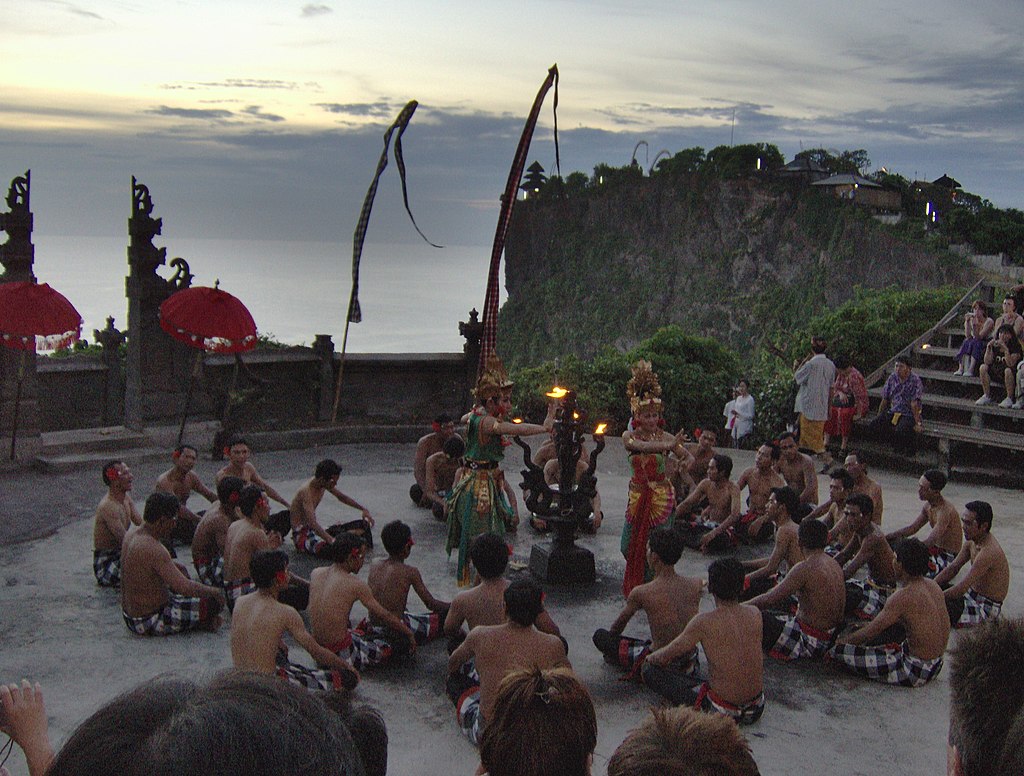
Credit : Wikipedia
This file is licensed under the Creative Commons Attribution-Share Alike 3.0 Unported license.
Credit : Holiday Tourism
Kecak, is a form of Balinese Hindu dance and music drama that was developed in the 1930s in Bali. Since its creation, it has been performed primarily by men, with the first women’s kecak group having started in 2006. The dance is based on the story of the Ramayana and is traditionally performed in temples and villages across Bali
Also known as the Ramayana monkey chant, the dance is performed by a circle of as many as 150 performers wearing checked cloths around their waists, percussively chanting “chak” and moving their hands and arms. The performance depicts a battle from the Ramayana, in which the monkey-like Vanaras, led by Hanuman, help Prince Rama fight the evil King Ravana. Kecak has roots in sanghyang, a trance-inducing exorcism dance
References :
Wikipedia “Read”
Indonesian Kakawin Ramayana by Dr Uma Murthy “Read“
INDONESIA
Region:
Bali
Ethnic group
Spirituality
Hindu
Poco-Poco
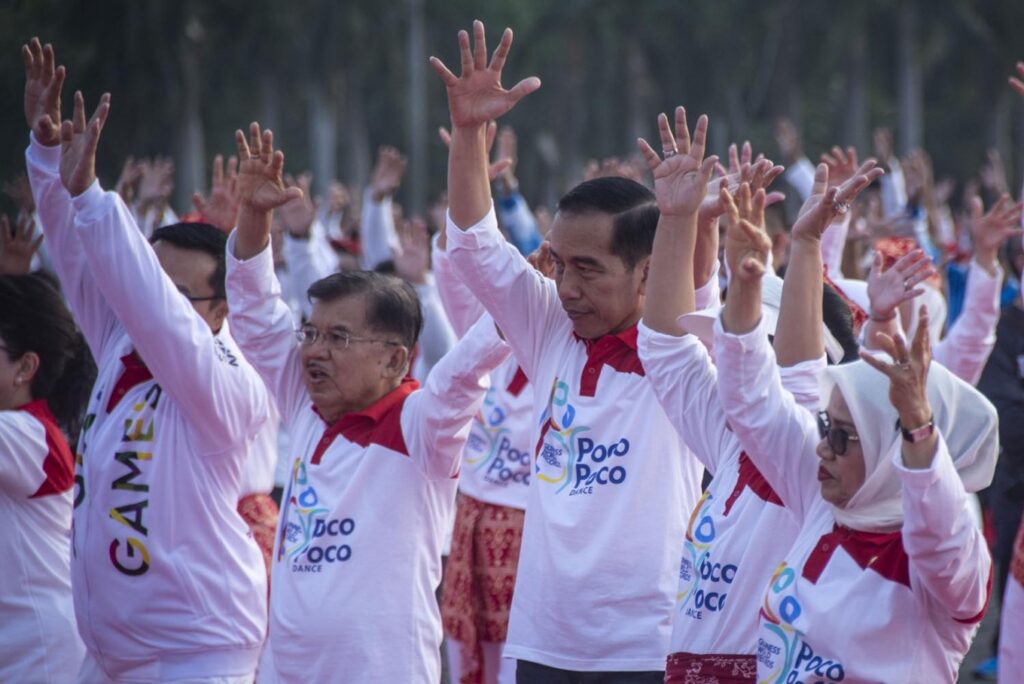
Credit : The Jakarta POst Read
In the beginning, the Poco-Poco dance was only an environment known for its emotional closeness with family, relatives, and relatives in Maluku. This dance is accompanied by a song from Maluku which is also titled poco-poco.
The Poco-Poco dance has found its place in the hearts of the Indonesian people. Since its release, the song and/or accompanying dance has made its way into weddings, family gatherings, and other gatherings of Indonesian people.
References :
Wikipedia “Read”
Indonesian Kakawin Ramayana by Dr Uma Murthy “Read“
INDONESIA
Region:
Maluku
Ethnic group
Spirituality
Saman

Credit : UNESCO
The Saman dance is part of the cultural heritage of the Gayo people of Aceh province in Sumatra. Boys and young men perform the Saman sitting on their heels or kneeling in tight rows. Each wears a black costume embroidered with colourful Gayo motifs symbolizing nature and noble values. The leader sits in the middle of the row and leads the singing of verses, mostly in the Gayo language. These offer guidance and can be religious, romantic or humorous in tone. Dancers clap their hands, slap their chests, thighs and the ground, click their fingers, and sway and twist their bodies and heads in time with the shifting rhythm – in unison or alternating with the moves of opposing dancers. These movements symbolize the daily lives of the Gayo people and their natural environment.
The Saman is performed to celebrate national and religious holidays, cementing relationships between village groups who invite each other for performances. The frequency of Saman performances and its transmission are decreasing, however. Many leaders with knowledge of the Saman are now elderly and without successors. Other forms of entertainment and new games are replacing informal transmission, and many young people now emigrate to further their education. Lack of funds is also a constraint, as Saman costumes and performances involve considerable expense.
References :
UNESCO “Read”
Indonesian Kakawin Ramayana by Dr Uma Murthy “Read“
INDONESIA
Region:
Aceh (Sumatra)
Ethnic group
Gayo
Spirituality
Srimpi
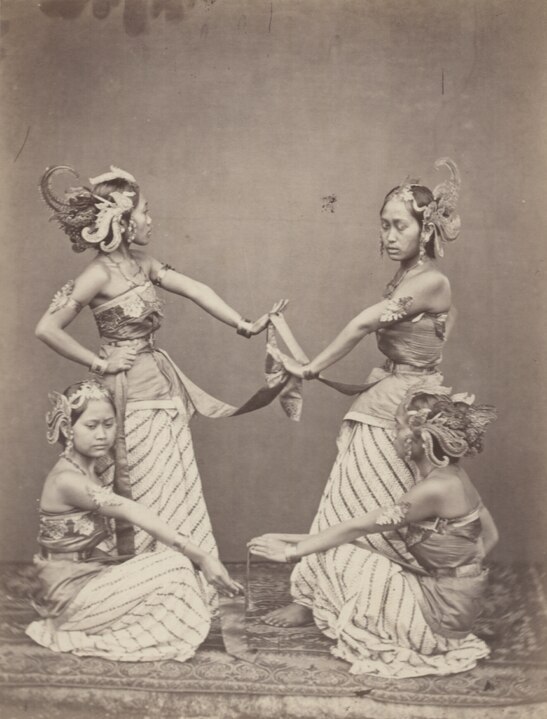
Credit : Wikipedia
Isidore van Kinsbergen – Leiden University Library, KITLV, image 115029
Credit : W.Ragamulya Tetet Mateus
Srimpi is a ritualised dance of Java, associated with the royal palaces of Yogyakarta and Surakarta. It is one of the classical dances of Central Java. Along with the bedhaya( a more sacred dance), srimpi epitomised the elegant character of the royal Javanese court, becoming a symbol of the ruler’s power as well as the refinement of Javanese culture.
The srimpi dance is usually performed by four female dancers, but other numbers such as two, six or eight dancers are also possible, depending on the type of srimpi being performed. Similarity in looks, height and body type among dancers is preferred to achieve better aesthetics. Srimpi demonstrate soft, slow and graceful movements, highly stylised hand positions, stances and body poses, coupled with the shoulder-baring kemben outfit, to describe elegance, modesty, refinement, beauty and grace. The dancer moves slowly accompanied with serene gamelan music
References :
Wikipedia “Read”
Indonesian Kakawin Ramayana by Dr Uma Murthy “Read“
INDONESIA
Region:
Central Java
Ethnic group
Spirituality
Tortor
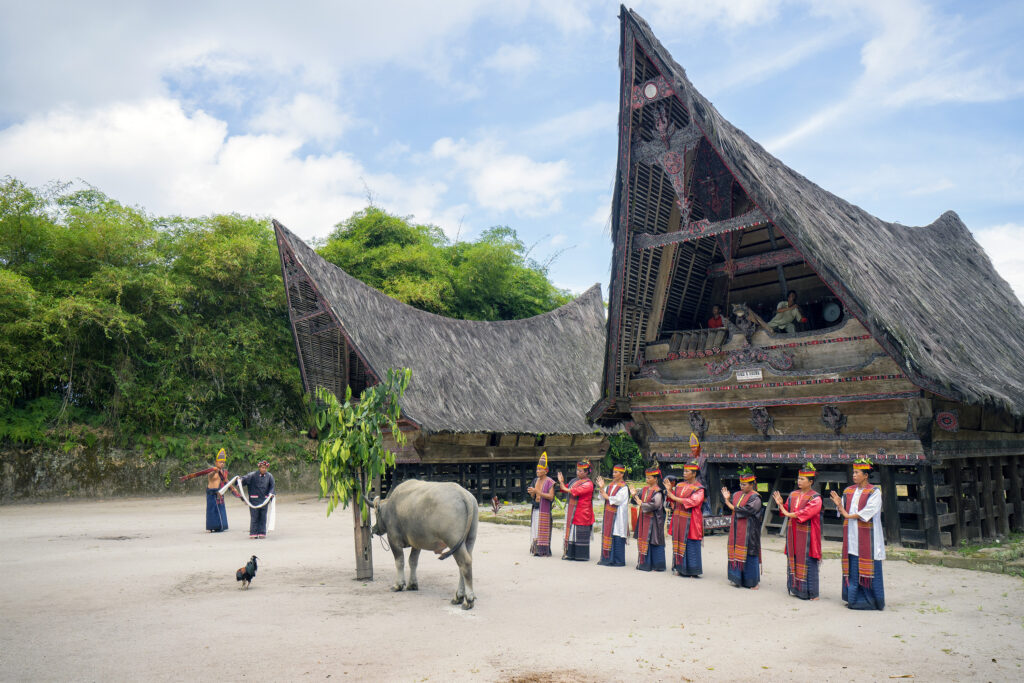
Credit : Wikipedia
This file is licensed under the Creative Commons Attribution-Share Alike 4.0 International license.
Tortor is a traditional Batak dance originating from North Sumatra,. This dance was originally a ritual and sacred dance performed at funerals, healing ceremonies, and other traditional Batak ceremonies. For the Batak people, tortor dance has both cultural and spiritual values. Through this dance, people express their hopes and prayers. Demonstrations of attitudes and feelings through this dance describe the situation and conditions that are being experienced.
Tortor dance is one of the oldest dances in Indonesia.
References :
Wikipedia “Read”
Indonesian Kakawin Ramayana by Dr Uma Murthy “Read“
Credit : Aswin
INDONESIA
Region:
North Sumatra
Ethnic group
Batak
Spirituality
Batak
